Citizen Action
D Day (Drilling Day) Minus 8: Latest on Dallas Gas Ordinance
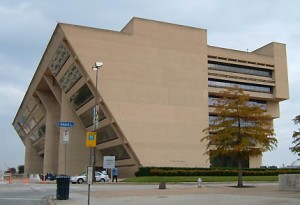 If you can, please be sure and attend and speak-up during the public comment time being offered by the Dallas City Council today at 1 pm. Although hastily-called on the day before Thanksgiving, this "unofficial" hearing is a chance for you to speak to Council Members while things still seem to be in motion at City Hall, as opposed to next Wednesday's official hearing and vote, when things might have already been settled.
If you can, please be sure and attend and speak-up during the public comment time being offered by the Dallas City Council today at 1 pm. Although hastily-called on the day before Thanksgiving, this "unofficial" hearing is a chance for you to speak to Council Members while things still seem to be in motion at City Hall, as opposed to next Wednesday's official hearing and vote, when things might have already been settled.
In other ordinance-related news……
– The Dallas Morning News published an excellent editorial in today's edition (reprinted below) urging the council to approve the City Plan Commission draft ordinance as is. "Council members should remember that their first obligation is to protect existing neighborhoods. This proposal is reasonable and offers far better protections for residents than had existed on the books. The council should adopt it."
– According to more than one source at City Hall, Dallas "Sustainability Department" staffer David Cossum, and our old friend City Attorney Tammie Palomino were going door-to-door through the council members offices trying to drum up support for a 1500 foot maximum buffer zone that then could be reduced to as little as 500 feet with a "variance." This is an option that has never been on the table before – it was never discussed by the Plan Commission, who wanted a 1000 foot minimum. You'll recall these are the same City Hall staffers who lead the Gas Drilling Task Force down the garden path to carve out exemptions for the Trinity East permits without public knowledge. They are the same staffers who tried more than once to get the Plan Commission to back down from their support of a 1500 foot setback. According to our sources, the pair failed in getting the majority support they needed to go forward with their scheme. If you think ex-but-still-hanging-around former City Manager Mary Suhm isn't still having an impact at 1500 Marilla, this news should set you straight.
– There's a rumor of a deal between Council factions that would preserve the 1500 foot setback but allow variances down to 1000 feet on a 2/3rds vote, instead of the super majority 3/4's proposed by the City Plan Commission. In other words, a motion to reduce the setback or buffer zone from 1500 to 1000 feet for any well would require at least 6 votes to block under the 2/3rds provision vs. just four members having veto power under a 3/4's rule. We haven't heard a single argument to explain why this tweak is necessary or desirable. It could be petty politics – Rawlings doesn't want Griggs and Company having full veto power. Or it could be something more strategic that has to do with a specific site or operator, the way the City tried to shape the Task Force recommendations for the Trinity East permits without the public knowing what was going on.
If you haven't sent an e-mail to Mayor Rawlings requesting that he vote for the Plan Commission draft and its 1500 foot setback, please click here now and do so. And here's yesterday's post explaining the situation, and offering the e-mail addresses and phone numbers of Mayor Rawlings, Jennifer Staubach-Gates and Dwaine Caraway in case you want to contact the only three uncommitted council members left.
You only have until next Wednesday to influence these votes on the Council. Then it's all over, so please, do it now. Thanks.
Editorial: Dallas must not weaken balanced gas drilling rules
After nearly two years of contentious political haggling, the Dallas City Council will hear public comments Wednesday on proposed tougher gas drilling rules, the final step before the council votes on the plan next Wednesday. This newspaper urges council members to resist pressure to water down the City Plan Commission’s strong measure and adopt those recommendations in their entirety.
The Plan Commission has done a lot of hard work, resulting in new rules that fairly balance the rights of drillers against protections for Dallas neighborhoods from downsides of urban drilling.
For example, the commission is urging the council to enact a minimum 1,500-foot buffer zone around drilling sites, with a provision allowing a reduced 1,000-foot buffer zone in certain circumstances. That was a wise, hard-fought compromise intended to assure neighborhoods are free from excessive noise and possible health threats, and it is in line with setbacks enacted in other North Texas cities, such as Flower Mound.
It is also a major improvement over Dallas’ current rule, which permits drilling within 300 feet of schools, churches and residential areas. Although some council members say the 1,500-foot setback might draw a lawsuit from drillers, the greater distance setback is in the best interests of Dallas residents.
Other key provisions would require drillers to disclose all hazardous materials used on a drilling site, restrict drilling during droughts, and ban wastewater injection wells, which some experts suspect are tied to earthquake activity. We’re also impressed that plan commissioners are urging the council to consider establishing a pollution-offsets program to make sure drilling won’t undermine the region’s overall efforts to clean the air. These all are reasonable and extremely important safeguards that need to be in place before urban drilling is allowed.
Unfortunately, the commission didn’t recommend an outright ban on drilling in floodplains and on parkland, but at least the panel has recommended that the council set a reasonably high bar — a three-quarters vote — before drilling would be permitted in parks.
Overall, this is a good ordinance because it doesn’t give drillers carte blanche yet recognizes that urban gas drilling is part of America’s energy future. Nor does the proposal let the perfect be the enemy of the good. Thus the council should not undo the constructive work of plan commissioners with last-minute changes that would weaken the ordinance.
Council members should remember that their first obligation is to protect existing neighborhoods. This proposal is reasonable and offers far better protections for residents than had existed on the books. The council should adopt it.
KEY VICTORIES
• Setbacks of drilling operations from schools, churches and homes to a minimum 1,500-foot buffer zone around all sites. Drillers could request a 1,000-foot zone in certain circumstances.
• Authority for the city to impose water restrictions during drought conditions.
• Requirement for drillers to disclose all hazardous materials used on a site.
• Ban on wastewater injection wells from being drilled within city limits.
• Proposed pollution-offsets program to protect air quality.
9 Days Until the End of the Dallas Gas Wars: What You Can Do
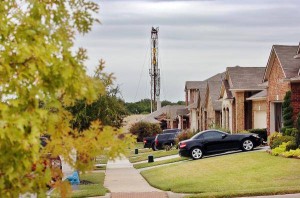 We only have 9 days to protect what it's taken us at least the last 12 months to build. The final Dallas City Council vote on a new gas drilling ordinance will take place on Wednesday, December 11th.
We only have 9 days to protect what it's taken us at least the last 12 months to build. The final Dallas City Council vote on a new gas drilling ordinance will take place on Wednesday, December 11th.
THIS WEDNESDAY – Tomorrow
December 4th
1 pm
Dallas City Council Mtg.
Dallas City Hall 6th Floor
Public Comment Being Taken on New Gas Drilling Ordinance
NEXT WEDNESDAY
December 11th
1 pm
Dallas City Council Mtg.
Dallas City Hall 6th Floor
Public hearing and VOTE on new Gas
Gas Drilling Ordinance
If you've come to City Hall on this issue recently, thank you, but we need you to show up again in the next two weeks and make sure our previous victories remain intact.
If you haven't shown up yet, or it's been a while, we really need some fresh faces to speak up and support the strongest ordinance we can get.
What's at Stake:
The 1500-foot buffer zone between drilling and compressor stations and neighborhoods.
This 1500-foot "setback" was supported by a 14-1 vote of the City Plan Commission in its recommendations to the City Council. It applies not only to gas drilling sites, but to large compressor stations too.
Flower Mound has a 1500-foot setback. The Lubbock Health Board has recommended a 1500-foot setback for that city. Denton has just voted for a 1200-foot setback.
Yet at least six city council members (Jerry Allen, Sheffe Kadane, Vonciel Hill, Tenell Atkins, Lee Kleinman, and Rick Callahan want to rollback that distance to allow drilling and compressor stations within just 1000 feet of neighborhoods and schools, and with "variances," as close as 500 feet.
Recently, old wells were activated in Denton that are as close as 600 feet to homes that were built since the leases were granted. According to press coverage last week, "residents in the Vintage neighborhood were not happy when they noticed "vibrations, noise and glare" about 600 feet from their homes…."
The disruption was so great that the City of Denton sued the gas drillers. "The actions of the Defendants are causing immediate and irreparable harm," the city's lawsuit said.
The Politics:
This is the kind of heavy industry these six city council members want to bring to Dallas neighborhoods, and they'll succeed if they can get Mayor Rawlings, Jennifer Gates and/or Dwaine Caraway to agree with them.
The rest of the council has made up its mind. It's the six backers of industry listed above vs. the six council members who voted to reject the Trinity East permits (Scott Griggs, Philip Kingston, Monica Alonzo, Adam Medrano, Sandy Greyson, and Carolyn Davis). Any motion needs 8 vote to win.
That's why these three Council members – Mayor Rawlings, Jennifer Gates, and Dwaine Caraway – will determine whether Dallas gets a more, or less protective gas drilling ordinance.
Mayor Rawlings has gone on record as opposing gas drilling in Dallas on principle. He's also gone on record saying he'd support the CPC recommendations. We need to make sure he keeps his word. He should be leading the charge for the most protective ordinance we can get.
Jennifer Gates ran on a platform of keeping drilling out of neighborhoods. We need to remind her of that and that she too needs to be leading the fight to keep the 1500 foot setback.
Dwaine Carway needs to be reminded that gas drilling is an environmental justice issue that will disproportionately hurt low income and minority areas of Dallas.
WHAT YOU CAN DO TO HELP:
1) Attend one or both of the next City Council meetings and ask the Council to pass the draft gas ordinance that the City Plan Commission recommended, including the 1500 foot setback.
2) If you haven't already, click here and send the Mayor a quick "click n' send" e-mail asking him to keep his word and support the Plan Commission recommendations iin total, including the 1500 foot setback. Please do this asap.
(We've added the e-mail addresses of both Jennifer Gates and Dwaine Carraway to the message to make sure they know how you feel.)
3) Contact Mayor Rawlings, Jennifer Gates and Dwaine Caraway on your own:
Mayor Rawlings
mike.rawlings@dallascityhall.com
Adam McGough, Chief of Staff
Phone: 214-670-7894
Dwaine Caraway
dwaine.caraway@dallascityhall.com,
214-670-0781
Jennifer Gates
Jennifer.gates@dallascityhall.com
Phone: 214-670-3816
4) Stay Tuned. They're more actions being planned leading up to the 11th so you can express your support for a strong ordinance. Keep on the lookout in your e-mailbox for alerts and on line here on the Downwinders' blog.
Scientific Support For a 1500-foot Setback
The 2012 Colorado School of Public Health study of cancer and non-cancer risks in the gas field, entitled "Human health risk assessment of air emissions from development of unconventional natural gas resources." This study concluded that residents living within a half-mile of a gas well had a 66% higher incidence of cancer than those living further away from a well.
The 2013 Emory University study found the risk of developing non-Hodgkin lymphoma increased among those living in proximity to facilities that release benzene. Natural gas facilities can release a lot of Benzene.
A 2012 report from Cornell University found that a mother's exposure to fracking before birth increases the overall prevalence of low birth weight by 25 percent.
Another 2012 Cornell University study that focused on animal health in the gas field concluded that reduced milk production, gastrointestinal, neurological, urological issues and sudden death are just a few of the symptoms experienced by livestock living near natural gas fracking sites.
Dr. Vikas Kapil of the National Center for Environmental Health at the U.S. Centers for Disease Control and Prevention gave a presentation in January 2012, saying "We do not have enough information to say with certainty whether shale gas drilling poses a threat to public health."
In addition, the Army Corp of Engineers recommends a distance of 3000 feet between structures like dams and levees and gas wells because of the danger of vibrations to structural integrity. If this distance is good enough for a dam, it's good enough to protect a home's foundation.
Know Your History
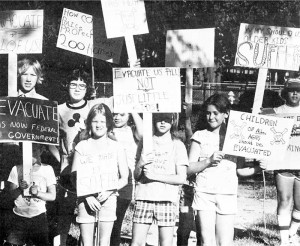 We've written about the founding of the modern environemental health movement at Love Canal, and the rise of housewife-to-hellraiser Lios Gibbs. As part of its "Retro Report" series of mini-films on past headline-making stories, the New York Times takes a look back and finds a continuing "Legacy of Doubt."
We've written about the founding of the modern environemental health movement at Love Canal, and the rise of housewife-to-hellraiser Lios Gibbs. As part of its "Retro Report" series of mini-films on past headline-making stories, the New York Times takes a look back and finds a continuing "Legacy of Doubt."
Downwinders Had A Good Day in Court Battling EPA Over Cement Plant Rules
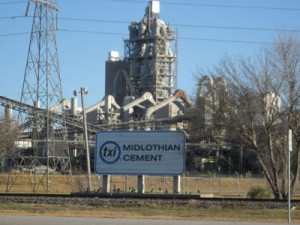 Downwinders has been trying to get new emission limits for cement plants since the mid-1990's. We're still trying.
Downwinders has been trying to get new emission limits for cement plants since the mid-1990's. We're still trying.
The first real reform in those rules during the Clinton Administration were pathetically inadequate. Downwinders and other groups assisted by DC-based Earth Justice sued to get them strengthened. We won. When new rules finally emerged from EPA in 2009, they were much better. Many of you came out to the historic national hearing at the DFW Airport hotel to testify in favor of them.
These rules were on their way to being signed by President Obama when they got hijacked by industry at their stop at the Office of Management and Budget, which must review all new regulations. When they emerged, they were unrecognizable in many ways, with deadlines pushed back by years and the important Particulate Matter standard being significantly weakened.
Once again, we're back in court trying to get these watered down rules thrown out. Last week, the DC appeals court that usually takes up federal regulatory fights heard oral arguments from both sides, and even the Republican judges on the panel were skeptical of the Administration's rewrite job.
Reprinted in full below is an inside-the-Beltway account of the proceedings that gives you some idea of what's at stake and what a good day citizens and their representatives enjoyed in court. No date on when to expect a ruling. Even then, if we win, the rules go back to EPA to be rewritten again, albeit with more judicial constraint…theoretically at least.
Judges seem skeptical of EPA claims in cement emissions case
Jeremy P. Jacobs, E&E reporter
Published: Thursday, October 24, 2013
Public health advocates argued in court today that U.S. EPA unlawfully weakened and delayed air standards for cement manufacturers, appearing to gain some traction with a panel of federal appellate judges.
The Natural Resources Defense Council contends EPA caved to industry pressure when it revised its National Emission Standards for Hazardous Air Pollutants, or NESHAP, for portland cement kilns and pushed back its compliance date by two years.
EPA's standards apply to several pollutants, including particulate matter, mercury and other acid gases. The agency revised the particulate matter standard after a court ruling in 2011, but advocates claim the agency did more than the ruling required.
James Pew of Earthjustice, representing the NRDC, told the U.S. Court of Appeals for the District of Columbia Circuit that EPA "gratuitously weakened the particulate matter standard" and violated the "plain and literal meaning" of the Clean Air Act.
Further, he said, many of the issues EPA addressed with its changes "didn't come up" in the previous case.
The cement NESHAP has long been the subject of controversy and litigation.
The kilns are one of the top sources of man-made mercury emissions in the United States. Public health advocates forced EPA to set the standards in a 2010 lawsuit, and when the agency issued the standards later that year it said they would prevent 960 to 2,500 deaths per year.
Industry, however, quickly challenged the standards at the D.C. Circuit. In December 2011, the court ordered EPA to reconsider the standards by taking commercial incinerators that burn solid waste out of its calculations. However, the court largely left the standards in place, including their 2013 compliance deadline (E&ENews PM, Dec. 9, 2011).
When EPA recalculated the standard for particulate matter, the advocates claim the agency made it less stringent. Additionally, EPA reached a settlement with the portland cement industry to delay compliance to September 2015 for all pollutants — not just particulate matter (Greenwire, Dec. 7, 2012).
Public health advocates challenged both actions, as well as a shift from continuous monitoring to one-time annual stack testing for compliance — which also changed the particulate matter standard. The environmentalists also question the standard's inclusion of an "affirmative defense" that protects kilns from citizen lawsuits if they violate the standards during an unavoidable malfunction.
Each issue came up today before a three-judge panel, which included two judges who are considered potential future Supreme Court nominees. The panel appeared receptive to some of the advocates' arguments but not to others.
For example, Judge Brett Kavanaugh, one of the country's leading conservative jurists, appeared skeptical of EPA's decision to delay standards for mercury and other gases to 2015, even though the Clean Air Act says standards must take effect within three years. The 2010 standards for those pollutants, which weren't affected by the D.C. Circuit ruling in 2011, should be in effect now.
"I don't understand," said Kavanaugh, a Republican appointee. "I need help. I don't understand the interrelatedness."
Further, Senior Judge Harry Edwards, a Democratic appointee, said EPA could have easily linked the standards by saying it wasn't "practicable" to meet some without meeting the others. But EPA, Edwards said, never made that argument in the rulemaking.
"I'm really not following this," Edwards said. "Where does the agency make the finding … that compliance couldn't be done practicably?"
Matthew Oakes of the Department of Justice, representing EPA, countered that all the standards are related because the pollution control technology required to limit particulate matter also controls emissions of mercury and other gases. Therefore, it didn't make sense to require kilns to install technology for mercury, for example, before it knew the final particulate matter standard, he said.
That argument was echoed by Carter Phillips of Sidley Austin LLP, representing the cement industry, which intervened in the case.
"You cannot implement any of them in a one-off system," he said.
It was unclear which way the judges were leaning with regard to the advocates' arguments surrounding the particulate matter standard itself. But they appeared receptive to their challenge to EPA's affirmative defense.
Oakes argued that the advocates lacked standing to challenge the affirmative defense, meaning they had failed to prove how they would be injured by it. That notion was flatly rejected by the panel, which said the defense would allow kilns to, at times, exceed the standards, which would harm human health. Therefore, the advocates have grounds to bring the lawsuit, the judges said.
The panel was also skeptical of EPA's arguments on the substantive issue of whether EPA could create the affirmative defense in the first place. Judge Srikanth Srinivasan, President Obama's first appointee to the D.C. Circuit and a leading liberal judge, contended that the Clean Air Act didn't grant EPA that ability.
"This authority wasn't delegated to the EPA to begin with," he said.
Study Reveals Cancer Hot Spots Downwind of Canadian Oil and Gas Processing Centers
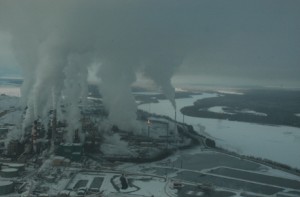 On the heels of the World Health Organization declaring air pollution a carcinogen, a study published this week from the University of California-Irvine and University of Michigan found higher levels of specific carcinogens in communities downwind of Canadian "oil, gas and tar sands processing zones", and higher rates of Luekemia and non-Hodgkin’s lymphoma among men living in those downwind communities.
On the heels of the World Health Organization declaring air pollution a carcinogen, a study published this week from the University of California-Irvine and University of Michigan found higher levels of specific carcinogens in communities downwind of Canadian "oil, gas and tar sands processing zones", and higher rates of Luekemia and non-Hodgkin’s lymphoma among men living in those downwind communities.
Despite their rural location, the recorded levels of the carcinogens, including 1,3-butadiene and benzene, were higher than in some of the world's most polluted cities. Examining area health records that went back a decade showed the number of men with leukemia and non-Hodgkin’s lymphoma was greater in the communities closest to the pollution plumes.
The authors strongly recommended that the industrial emissions be decreased to protect both workers and nearby residents.
“Our study was designed to test what kinds of concentrations could be encountered on the ground during a random visit downwind of various facilities. We’re seeing elevated levels of carcinogens and other gases in the same area where we’re seeing excess cancers known to be caused by these chemicals,” said UC Irvine chemist Isobel Simpson, lead author of the paper in Atmospheric Environment. “Our main point is that it would be good to proactively lower these emissions of known carcinogens. You can study it and study it, but at some point you just have to say, ‘Let’s reduce it.’
Co-author Stuart Batterman, a University of Michigan professor of environmental health sciences, agreed: “These levels, found over a broad area, are clearly associated with industrial emissions. They also are evidence of major regulatory gaps in monitoring and controlling such emissions and in public health surveillance.”
Dr. Batterman is familiar to Downwinders old timers as being the first scientist to take on the state's laughable "Health Risk Assessment" of TXI's burning of hazardous waste at it Midlothian cement plant. In what became known simply as the "Batterman Report," his mid-1990's critique of the official document was devastating in its scope and depth. It became a template on how to deconstruct any TCEQ attempt to gloss over the dangers of living downwind of a large polluter.
In this new study, Dr. Batterman and his colleagues monitored emissions in the rural Fort Saskatchewan area downwind of major refineries, chemical manufacturers and tar sands processors owned by BP, Dow, Shell and other companies in the so-called “Industrial Heartland” of Alberta. Taking random one-minute samples in 2008, 2010 and 2012, the results were very similar over time – amounts of some of the most dangerous Volatile Organic Compounds were 6,000 times higher than normal. Higher than in Mexico City during the 1990s or in the still polluted Houston-Galveston area.
Simpson said the findings were important for other residential areas downwind of refineries and chemical manufacturers, including parts of Los Angeles.
“For any community downwind of heavy industrial activity, I would say it’s certainly prudent to conduct surveys of both air quality – especially carcinogens – and human health."
The Dallas Gas Wars Are Getting Noticed
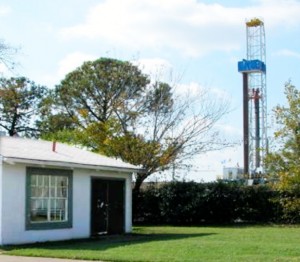 The Texas Tribune has a pretty good overview of the different ways Texas municiplaities are regulating gas drilling, including the contrast between industry-friendly Ft. Worth and a more skeptical Dallas:
The Texas Tribune has a pretty good overview of the different ways Texas municiplaities are regulating gas drilling, including the contrast between industry-friendly Ft. Worth and a more skeptical Dallas:
Meanwhile, industry representatives and some lawyers point to Fort Worth, 40 miles west of Dallas, as a model for balancing economic and environmental concerns. Between 2006 and 2012, the city took in nearly $264 million in natural gas revenue, including lease bonuses, royalties and property taxes on mineral leases.
Fort Worth’s ordinance — which limits noise, keeps most drilling 600 feet from homes and spells out duties for local inspectors — has grown to more than 60 pages from five. Most recently, the city tightened rules on gas compressors.
But environmentalists point to the city as a model to avoid. It is pockmarked with more than 1,700 producing wells, with pad sites nestled beside sports fields, homes and schools.
“It’s gradually chipping away the quality of life,” said Don Young, a 62-year-old Fort Worth native and longtime activist, who worries that drilling has worsened air quality.
In 2011, a study commissioned by the city concluded that drilling exposed residents to harmful pollutants like acrolein, benzene and formaldehyde, but not at dangerous levels.
Ridley said Fort Worth had come up several times in the planning commission’s talks, but mostly when suggesting stricter regulations. “We arrived at what we thought was an effective means to protect people,” he said.
Your Tax Dollars at Work: TCEQ Argues Air IS NOT a Natural Resource
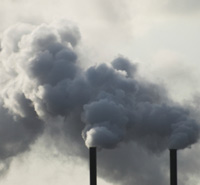 So this is how ideological things have become at the Texas Commission for Environmental Quality. Even though the agency won a fight in court to keep a group of parents represented by the Texas Environmental Law Center from being able to sue the state for not regulating Greenhouse Gases, TCEQ lawyers are working overtime to make the judge in the case retract this statement:
So this is how ideological things have become at the Texas Commission for Environmental Quality. Even though the agency won a fight in court to keep a group of parents represented by the Texas Environmental Law Center from being able to sue the state for not regulating Greenhouse Gases, TCEQ lawyers are working overtime to make the judge in the case retract this statement:
“The Court will find that the Commission’s conclusion, that the public trust doctrine is exclusively limited to the conservation of water, is legally invalid. The doctrine includes all natural resources of the State."
To the untrained eye, this might seem a pretty innocuous piece of prose. Water, air, land, these are pretty much the very definition of "natural resources." But them are fightin' words to Rick Perry's environmental watchdogs. Concede this point to the hippies, and there's a slippery slope leading all the way down to effective regulation and supervision of airborne threats to the public health. Unacceptable.
You see under state law, only water is legally treated as a natural resource in Texas, subject to what's called the "public trust doctrine," which requires government to protect and maintain certain shared resources fundamental for human existence.
TCEQ lawyers are saying air just isn't so fundamental to humans as the wet stuff, although the last time we checked, most people could only last 2 to 5 minutes without it.
State lawyers late last month argued in front of the Texas Third Court of Appeals that Judge Triana’s comments were beyond the scope of the case and should be vacated.
Terry Clawson, an agency spokesman, said….“The T.C.E.Q. has concerns with how the district court opinion addressed the matter of public trust doctrine,” Mr. Clawson added. “The scope of this doctrine is a very important issue, which deserves to be fully vetted.”
The agency complained to the court that Judge Triana’s statements were seen by the plaintiffs “as a victory,” even noting that environmental groups had called her ruling “a blockbuster” for their cause in news releases.
But David Spence, a professor of business and law at the University of Texas at Austin, said the scope of public trust was more symbolic than practical.
“In a sense it’s a kind of low-stakes argument,” Mr. Spence said. “The public trust doctrine in the U.S. is a fairly weak thing.”
Each state applies the principle differently, and few have used it with much force. The doctrine has generally been successful only at protecting open beaches for public use, Mr. Spence said.
So which is it – practical or symbolic? For both citizens and the TCEQ, the two are one in the same. Rick Perry's appointees cannot afford to let citizens get their foot in the legal door to establish a principle that may result in one day overriding their own authority, however abstract it appears that threat is now.
Likewise, in a state government as hostile to citizen concerns as this one, what do you have to lose in trying to establish a, er, beachhead, in terms of seeing safe and legal air as a finite "natural resource" that should be protected? Indeed, one of TCEQ's predecessor's names was the Texas Natural Resources Conservation Commission. It regulated air pollution in Texas – presumably because it was a Natural Resource. This "Hail Mary!" legal strategy seems at least as effective as going down to Austin every two years expecting things to get better.
The appeals court is expected to rule soon. It could remove the statement entirely from the record the way TCEQ wants, or merely say is a statement and not a legal precedent, which is what even the plaintiff's lawyers expect. Stay tuned.
Mid-Day Workshop Tuesday on Corporate Research for Beginners
 Late word came of a Center for Health and Environmental Justice phone-in training workshop on corporate research, scheduled for Tuesday from 11am to 1pm our time here in DFW. There's no cost but the number of phone lines are limited, so you might want to RSVP ASAP.
Late word came of a Center for Health and Environmental Justice phone-in training workshop on corporate research, scheduled for Tuesday from 11am to 1pm our time here in DFW. There's no cost but the number of phone lines are limited, so you might want to RSVP ASAP.
There's a pretty good line up of research experts doing the talking, including Phil Mattera, Director of the Corporate Research Project, and Sofia Plagakis, an Environmental Right to Know Policy Analyst with the Center for Effective Government. It's advertised as a good way to get to know your corporate opposition, including ways to research earnings, learn who the major shareholders are, and take advantage of all the public data bases there are these days.
This is aimed at beginners, but with this kind of expertise, even cynical veterans shoud come away with some new tips.
Big D’s BFD
 Did you feel the ground shifting under your feet yesterday around 5 pm? It was another one of those local earthquakes caused by fracking. The epicenter was Dallas City Hall. Damage to the gas industry's rhetoric and credibility was extensive.
Did you feel the ground shifting under your feet yesterday around 5 pm? It was another one of those local earthquakes caused by fracking. The epicenter was Dallas City Hall. Damage to the gas industry's rhetoric and credibility was extensive.
By a vote of 14 to 1, the Dallas Plan Commission pronounced the permissive "Fort Worth Model" of regulating the drilling and production of natural gas in the Barnett Shale dead. The passing was definitive. As John Cleese might say, "This paradigm is no more…it has ceased to be…this is an EX-paradigm."
It didn't go down without a fight. Up until the very final hours of debate over language in the City's proposed new gas ordinance, staff was still offering weaker versions of rules to Commission members because "that's the way Fort Worth did it." They were all rejected in favor of stricter standards as part of what has the potential to be the most protective ordinance in the Barnett Shale.
Now all we have to do is get eight Dallas City Council members to help us realize that potential.
The draft passed yesterday isn't 100% of what residents want, and in one case doesn't even match the level of protection Dallas itself started out with in 2007. It still provides paths through the bureaucracy for drilling in parks and flood plains, instead of outright bans, and despite staff assurances, the chemical disclosure language isn't foolproof. But to see it only through the lens of what it's not yet doing is to ignore the huge impact of what it already does. Coming from the largest city in the Shale, the Dallas draft immediately offers a modern, tougher alternative to Ft. Worth's submissiveness for dealing with the problems of mining gas in urban environments. To quote our Vice-President, it's a B.F.D. Some of the highlights include:
1) A 1,500 property line-to-property line setback from neighborhoods and other protected uses, matching the most protective setbacks in the Barnett Shale. It can only be reduced to a minimum of 1000 feet with a variance, and that's only possible with 12 out of 15 council votes. Notice of any permit must go out in English and Spanish to all mailing addresses within 2000 feet and the applicant must hold a neighborhood meeting where the project is fully explained.
2) Electrification of all motors and engines on a drilling site. If operators want to make an exception and use combustion engines, they have to show why electrification isn't feasible, and the City has to agree.
3) Tough restrictions on where gas compressor stations can locate – only in heavy industry zoning districts, with the same 1,500 foot setbacks from neighborhoods and all other protected uses, fully enclosed, and they must use electric engines, not diesel or gas. Thanks to some quick pushback by residents and their allies on he Commission, we were able to win back all the rules that staff had excluded in their first take only 24 hours before the vote.
4) A ban on any injection wells in the City of Dallas.
5) A ban on fracking waste pits.
6) Requirements for a road repair agreement before a permit is even considered. This is above and beyond any other insurance or bonding requirement.
7) A recommendation to the Council that it establish a local air pollution off-sets program that would include natural gas facilities. Such a program would be the first of is kind in the nation and close a Clean Air Act loophole that exempts these facilities from participating in the federal off-sets program for smoggy "non-attainment areas."
8) Baseline testing of water, soil, air, and noise at every proposed site.
9) Individual non-toxic "tagging" of all fracking fluids used. Every operator will be required to put their unique chemical signature within the concoction they're pumping into the ground so that if any of it goes where it shouldn't, the offending well can be identified. It's DNA testing for fracking.
10) A recommendation to the Council that during drought conditions, it either charge substantially more for city water that's being used for fracking, or ban the use of city water for fracking all together.
11) A recommendation that the Council demand an additional letter of credit from operators beyond any other insurance or bond to cover uninsurable intentional acts of contamination, i.e. dumping waste into the Trinity River.
We're not in Cowtown anymore.
(There's not an online version of the final language up yet. We'll let you know when there is so you can look this thing over yourselves).
City attorney Tammy Palomino, always a reliable source of information, stated on the record that she believed the draft's language about chemical disclosure would cover all trade secrets, but we're not so sure. That's why we'll be asking the Council to add five simple words to this section that Ms. Palomino didn't: "with no exceptions for trade secrets."
Instead of banning drilling in the floodplain, the proposed ordinance makes it impractical, though not impossible. An operator would have to get a fill permit from the city, and approved by the Army Crop of Engineers, to build a mound that would elevate the entire drilling pad site out of the floodplain. Anyone who's seen the footage from Colorado's flooded gas plays over the last couple of weeks can identify the folly of this approach. What's to keep flood waters from eroding the elevated mound and taking the entire pad site down stream? Only the lack of a kind of levee-to-levee flood we've seen in Dallas before.
Park drilling provided the day's lesson in pretzel logic. A "protected use" includes a recreation area, "except when the operation site is on a public park, playground, or golf course." Then it's perfectly fine to have rig next to the swing set. Got it?
This is less protective than the original Dallas Park decision that preceded the notorious Suhm secret agreement with Trinity East. It called for the leasing of a park's mineral rights but banned surface drilling in any park. You could go under but not on. That's still the most sensible compromise but it went floundering for support yesterday.
Instead, the Park Board will have to request the City Council to hold "Chapter 26" public hearing, after which there must be a 3/4 vote of approval by the Council that officially concludes there's no other possible feasible use for the park land other than gas drilling.
Listening to the comments from many Commissioners right before the vote, one got the feeling that if they had to do it all over, they might not be so equivocal. Nevertheless, they all voted for the more convoluted approach. It's the most flawed part of the ordinance, especially in light of the outcry over allowing any drilling in any public park during the Trinity East fight.
With those exceptions, it was a banner day for residents who've been fighting this good fight for over three years now. It was the kind of day that after Trinity East's main lobbyist whined that the company just couldn't get the electrical hook-ups they needed (in the middle of Northwest Dallas by a major Interstate) during the public hearing right before the final vote, an influential conservative Commissioner successfully moved to amend the completed draft to make the section on mandatory electrification of compressor stations stronger. Ouch.
It was the kind of day when the only ally industry could muster among the 15 Plan Commissioners was the sometimes coherent Betty Culbreath, Dwaine Caraway's brand new gift to Dallas residents. Culbreath said she couldn't vote in conscience for a document that required so much from industry. She felt so passionate about the issue, she missed most of the Commission workshops over the past month or so where the ordinance language was debated. It'd be laughable except the council member who appointed her is now the Chair of the Council's Environmental Committee.
There's no official news about the timeline or process the Council will use to consider the draft now that it's been delivered to them. Despite the mostly winning day residents had on Thursday, its sobering to remember that we only got six votes to deny the Trinity East permits. We need at least two more to make sure this good ordinance stays intact, or gets even stronger.
Such a lopsided Commission result gives us a great running start to get those votes. Backsliding by Council members will be hard to pull-off publicly, although let's face it, some seem immune to embarrassment on this issue.
Cowtown circa 2008 will always be the industry's preferred template for regulation, because they mostly wrote the rules. Residents in the Shale now have a much more citizen-friendly 2013 Big D model they can use for counterpoint – if we can win ACT III of the Dallas Gas Wars.
Thanks to You, We Raised TWO Months of Clean Air Work Yesterday
 Grassroots groups live and die with their support on the ground. They're not affiliated with a well-heeled state or national organization that can subsidize their work. Without continuing sustenance from regular folks, they're doomed.
Grassroots groups live and die with their support on the ground. They're not affiliated with a well-heeled state or national organization that can subsidize their work. Without continuing sustenance from regular folks, they're doomed.
Downwinders at Risk is very lucky. We have a solid base of regular folks who appreciate what we do. They tolerate our constant flow of e-mails and posts. They show up at critical hearings and council meetings when we ask them. And they also fund our one and only employee.
For 20 years now, we've been able to fund the only full time staff person to do clean air work in DFW because these people – people like you – believe we have, and can, make a positive difference – in air quality, in policy-making, in protecting and expanding the rights of citizens who dare to fight back against Very Bad Ideas.
Yesterday a lot of you once again showed-up to give us a hand. Big time. And we're so grateful.
Downwinders at Risk had its best-ever one-day fundraising event yesterday as a participant in the Communities Foundation's North Texas Giving Day, collecting $5,115 in just 17 hours. This is twice the amount that the group had set for the day's goal, and it pays for not one, but two months of clean air organizing in North Texas. We're overwhelmed with this vote of confidence in our work and will try to do it justice in the battles to come.
A sincere thank you to everyone who contributed and made such a day possible. It lets us know that we must be doing something right, despite the challenges we face all the time to try and keep doing good work.
And if you didn't get a chance to help out yesterday, but still want to contribute to Downwinders, we've got our own contribution webpage here that you can use anytime, anywhere.
Onward through the smog……
